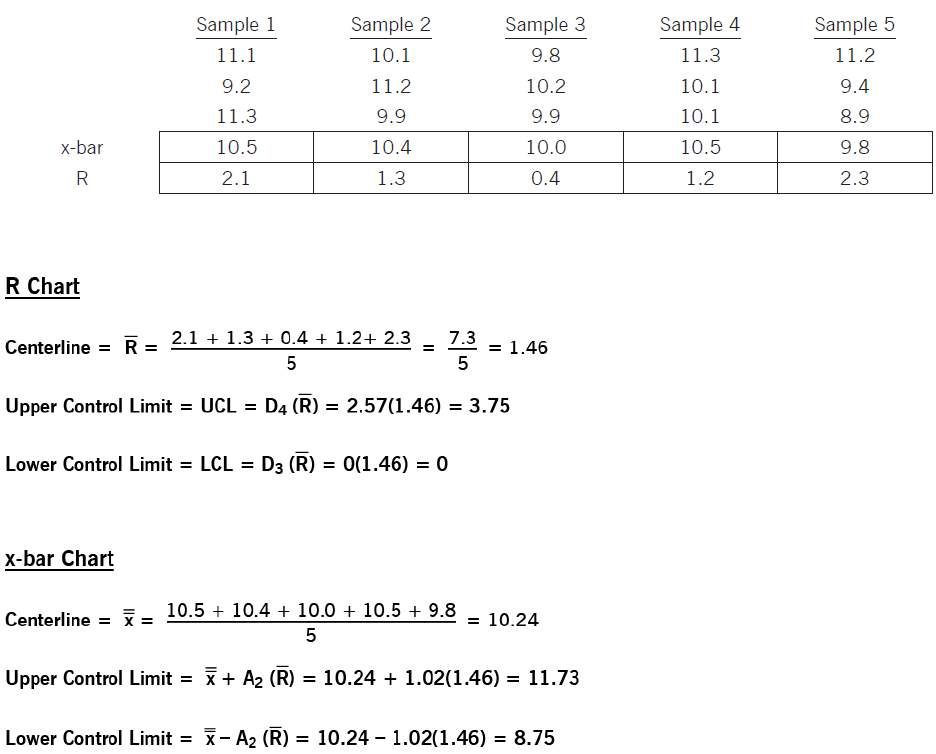How is an X-Bar R Chart Used?
X-Bar R charts are commonly used to examine the stability of a process over time. They measure performance on any type of process, from all the steps in a manufacturing process to determining the time customers must wait in line at a pharmacy.
An x-bar R chart can find the process mean (x-bar) and process range (R) over time. They provide continuous data to determine how well a process functions and stays within acceptable levels of variation.
Some notes to keep in mind when creating an x-bar R chart include:
- The data must be continuous
- The sample size (sub-group) must be at least two and should not be more than about 10-12
- The sample size cannot vary
- The data should be collected in a random and consecutive manner
- For the first chart on a process, collect at least 20-25 sample groups to ensure that an adequate measure of process variation has been taken
X-Bar R Chart Example
The following is an example of how control limits are computed for an x-bar and R chart. The subgroup sample size used in the following example is three.
Note: D3, D4, and A2 were all obtained from the Control Chart Constants Table for a sample size of n = 3.
An x-bar R chart is one of many tools in Lean and Six Sigma that accurately measure an organization’s performance. Once mastered, it provides data to leaders on changes they should make as well as measuring the success of changes put into place.

